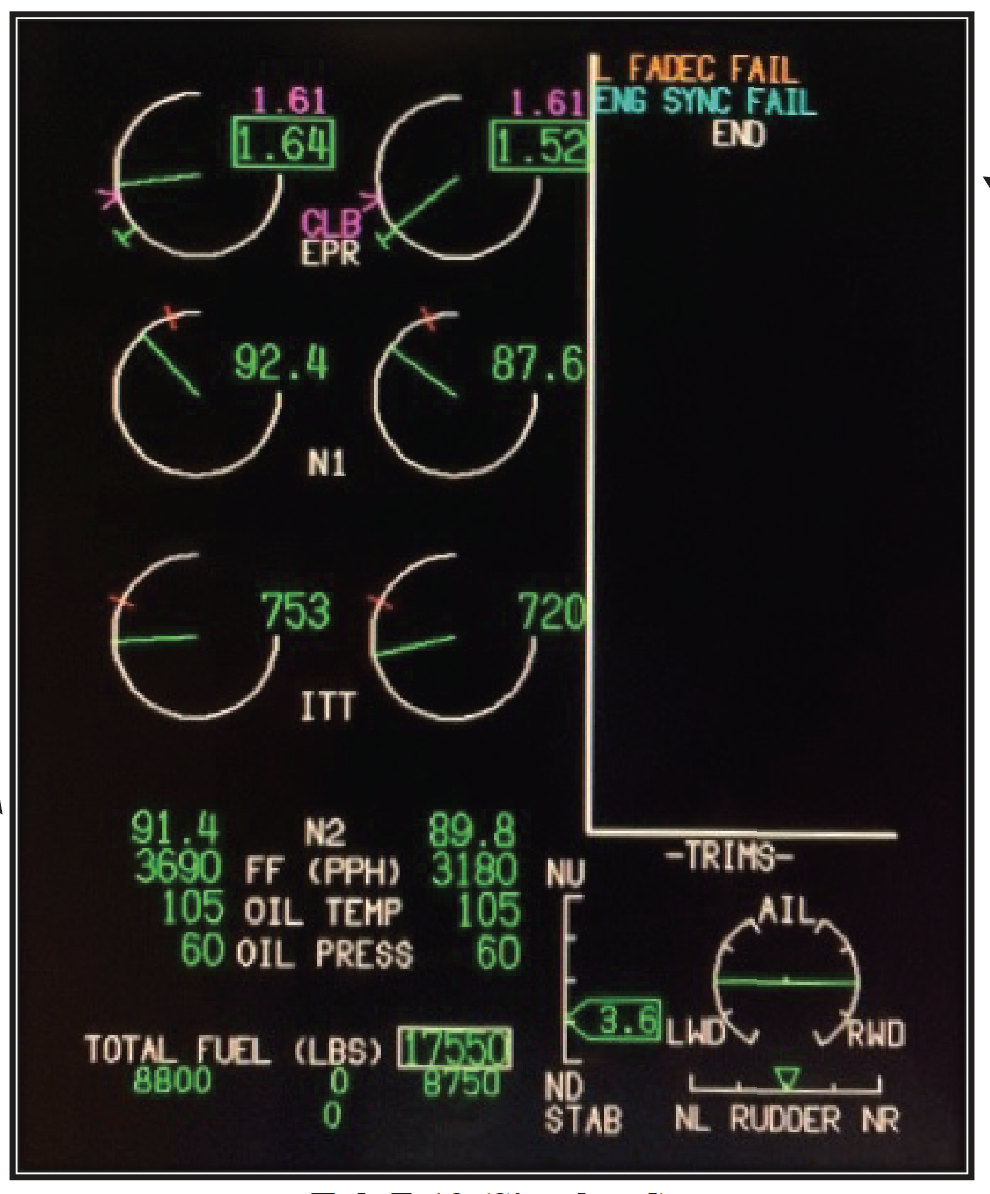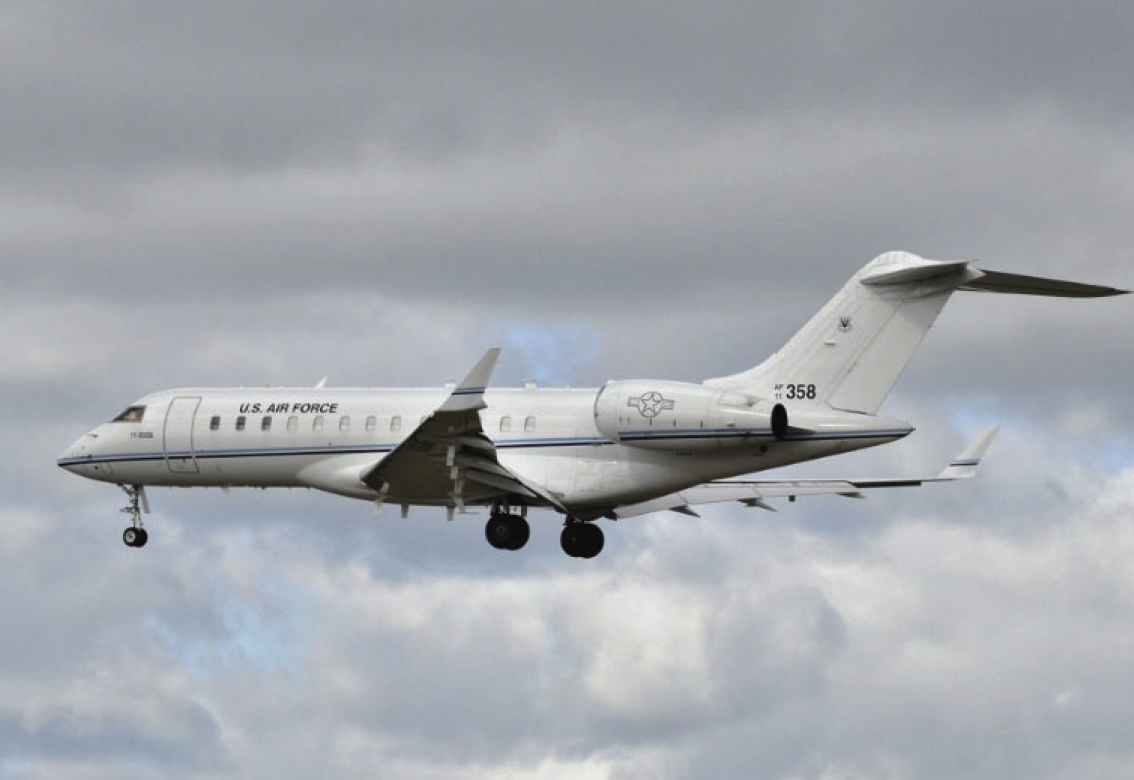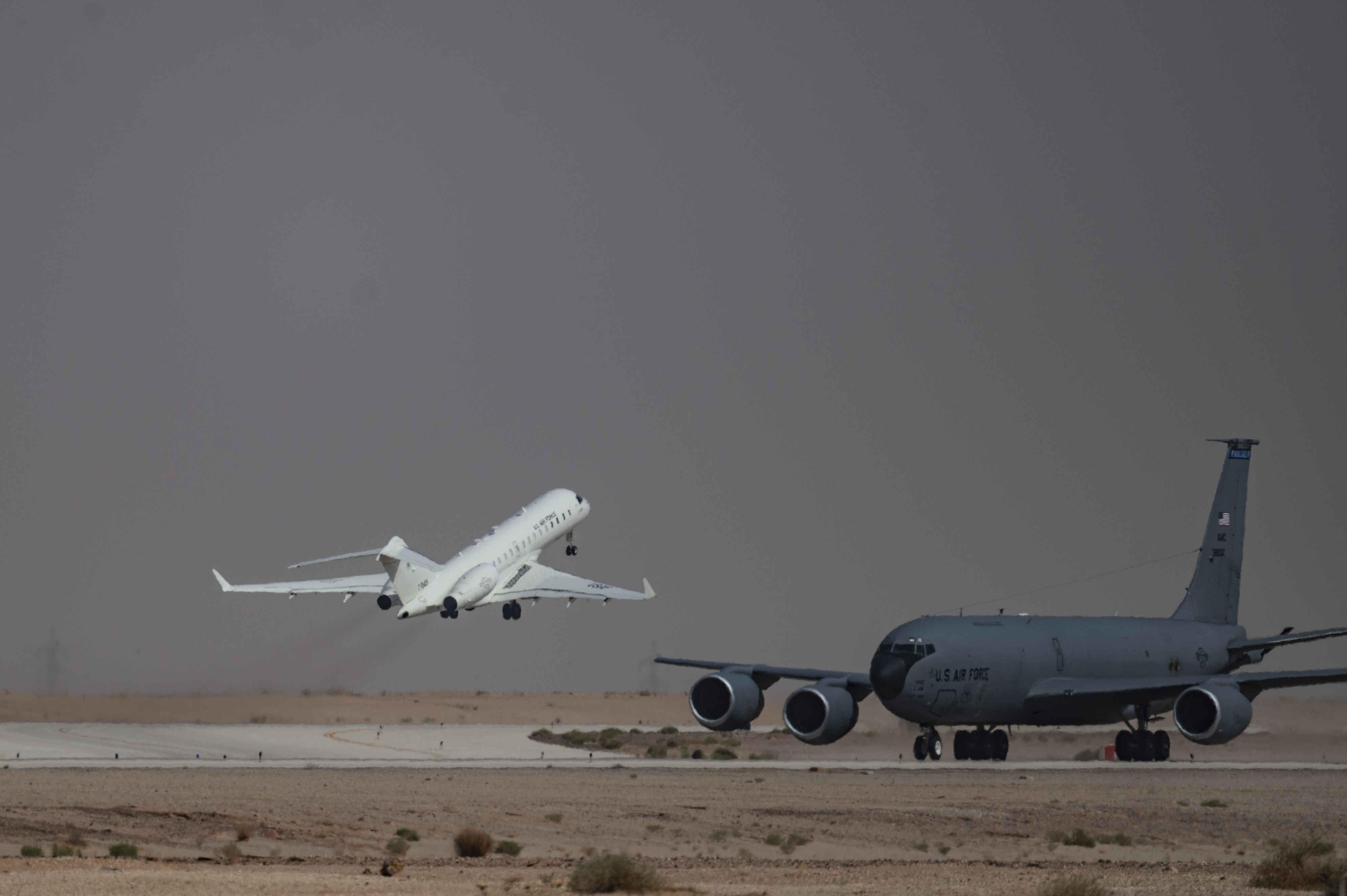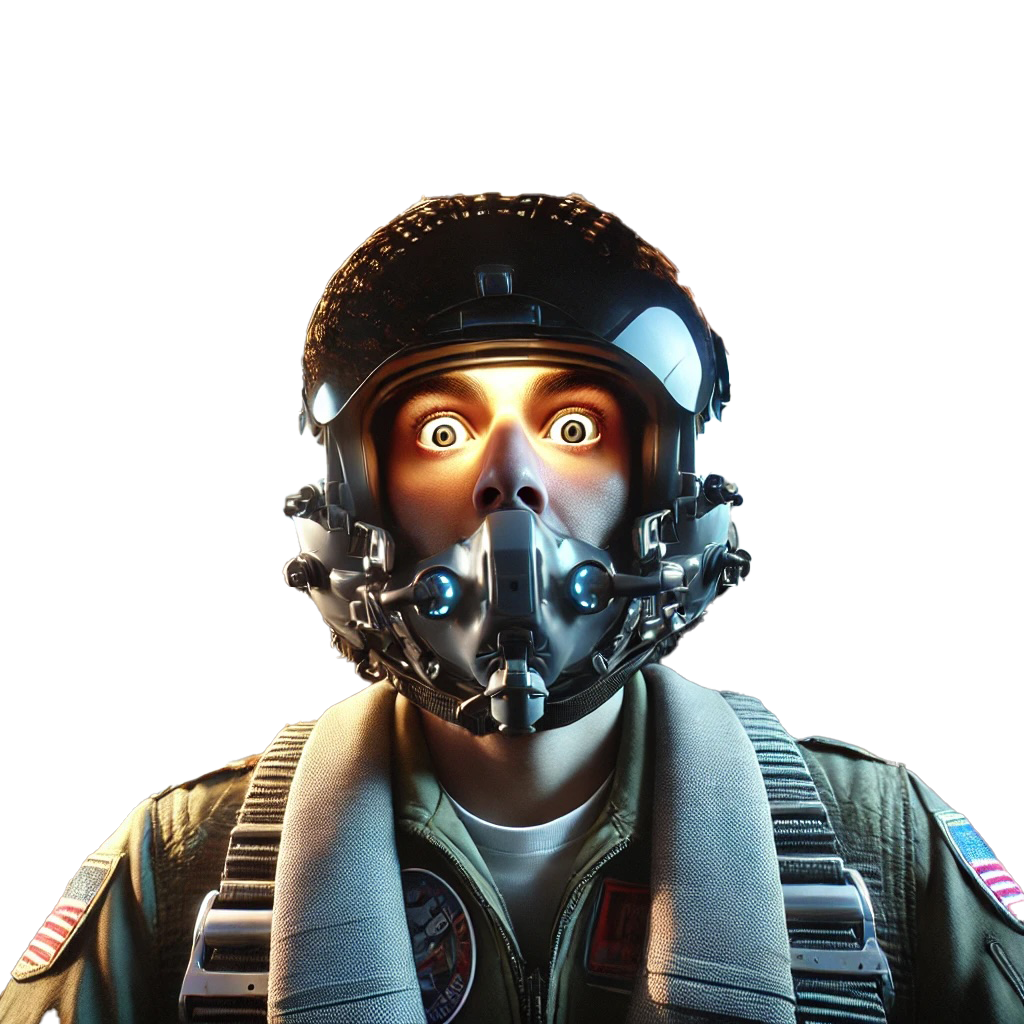Just reading the headlines or a brief summary, this appears to be a classic wrong engine shutdown by an inexperienced crew that should have known better, and now they are both dead. Not only is that summary wrong, if you leave this case study at that point, you will rob yourself of some valuable lessons that may someday save you from a similar fate.
— James Albright

Updated:
2025-03-15
We are trained to expect engine failures during takeoff in general, and just about anytime in the simulator. But in the airplane? Many years ago, when I started flying, having an engine explode on you wasn't unheard of, but these days, not so much. I had about ten such failures during my first ten years of flying, but none since then. Engines have become very reliable. In a simulator, the cues are normally obvious. In an airplane, less so. But even today, there are a few techniques that you can add to your engine shutdown procedure that can spare you a wrong engine shutdown.
Date & time: 27 Jan 2020, 13:09
Aircraft: Bombardier E-11A (Global Express)
Registration: 11-9358
Aircraft fate: Destroyed
Fatalities: 2 of 2 crew
Phase: En route
Departure / Destination airports: Kandahar Airport (OAKN), Afghanistan

1
The mission, the squadron, the aircraft, the pilots
. . . understanding the environment
The mission
[The aircraft] carries the Northrup Grumman Battlefield Airborne Communications Node (BACN), allowing different battlefield communication systems to share data. The BACN has the capability to relay voice, video, imagery and data between warfighters in the air and on the ground, 24 hours a day and seven days a week. All U.S. Air Force E-11As with the BACN payload are assigned to the 430th Expeditionary Electronic Combat Squadron and operate solely out of KAF [Kandahar Airfield].
Source: AIB, ¶3.f.
The BACN mission is often described as "Wifi in the sky," but that grossly simplifies what they do. The presence of the aircraft provides warfighters with instant contact to commanders, to each other, and to the data needed to conduct war operations effectively. While I imagine the warfighters might come to take the capability for granted, the mission is what is often called a "force multiplier."
The squadron
The 430th Expeditionary Electronic Combat Squadron (430 EECS) is a squadron in the 451 AEG and is the only unit in the U.S. Air Force that operates the E-11A with the Battlefield Airborne Communications Node (BACN) payload. The mission of the 430 EECS and the E- 11A is to serve as a BACN, which is a communications system that provides radio connectivity across the battlespace for airborne and surface operators.
Source: AIB, ¶3.e.
A key point to understand in a squadron like this is the minimal oversight from those who understand what it is the squadron does. There are no other Air Force units who operate the Global Express and pilots who come to the unit are likely to be coming from other aircraft types.
The aircraft
The Bombardier E-11A is the military variant of the civilian Bombardier BD-700 Global Express for use as an overhead communications-relay platform in southwest Asia.
Source: AIB, ¶3.f.
The squadron has four aircraft. Maintenance is handled by a civilian contractor, Northrup Grumman. The accident investigators assumed all maintenance was accomplished correctly, based on Northrup Grumman paperwork. The report did not attempt to determine why the engine failed, beyond the fact a fan blade had separated.
The pilots
According to the accident report, section 8, the Pilot Flying was a current and qualified instructor and evaluator pilot with 4,736.9 total hours of which 1,053.2 were in type. He had also flown the KC-10, RQ-4, MC-12, and T-1. He had flown the E-11A for just over two years. He would be considered highly experienced for an Air Force pilot. The Pilot Monitoring had received his initial qualification in the aircraft ten days prior to the accident flight. He had 1,343.5 total hours of which 27.6 were in type. He had also flown the B-1 and had been an instructor pilot in the T-6. His experience level would be considered appropriate for his background and time in the Air Force.
The Air Force uses CAE in Dallas, Texas for initial and recurrent E-11A training. I don't know about the quality of this training and the report does not offer any such judgment, other than to say the training does emphasize engine failure, shutdown, and restart procedures.
2
The cold facts
. . . what happened
Takeoff occurred at 1105L and was uneventful. The MC [Mishap Crew] reported VFR weather at KAF, with a cloud deck at higher altitudes, and proceeded to their assigned orbit using standard departure/climb procedures. The MC assumed a circular orbit just west of Kabul at 42,000 feet altitude at about 1136L.
At 1250L, the MC requested and was cleared by ATC to climb from 42,000 feet altitude to 43,000 feet altitude. The engine revolutions per minute (RPMs) advanced and the MC initiated the climb with the autopilot, gaining about 300 feet. At 1250:52L, a fan blade broke free and separated from the N1 first-stage turbofan of the left engine, causing major damage and resulting in the immediate shutdown of that engine by the Electronic Engine Controller (EEC), a subsystem of the Full Authority Digital Engine Controller (FADEC). This was accompanied by a bang recorded from the cockpit by the Cockpit Voice Recorder (CVR). Simultaneous with the bang, the CVR recording stopped and CVR data is unavailable after 1250:52L
Source: AIB, ¶4.d.(1)
Ten seconds after the catastrophic left engine failure, the MC retarded both throttles to just less than halfway (14 degrees; total throttle range is from 0 – 40 degrees) for one second, then slightly advancing the left throttle separately (26 degrees) for one second, then retarding it to align with the right throttle (both at 16 degrees) for one second, and finally splitting the throttles to advance the left throttle (to 31 degrees) while retarding the right to idle (0 degrees). Nine seconds after moving the right throttle to idle, the MC placed the right engine run switch to off, shutting down the right engine (Tab DD-15). Finally, at 1251:19L, the left throttle was advanced to full power (40 degrees), briefly cycled then brought to idle. At 1251:23L, both throttles were advanced from idle to full power.
Source: AIB, ¶4.d.(2)
The AIB goes on to speculate that the crew attempted to airstart the engine, first using a windmill start (since they were flying faster than best glide airspeed) and then using the APU which they eventually started. The report notes they could have made Bagram or Kabul airports had they flown a more appropriate airspeed.
At approximately 1309L, the MA impacted the ground approximately 21 NM short of Sharana, on a heading of roughly 140 degrees, consistent with a direct flight path towards Sharana. The terrain was unpopulated, largely flat, and covered in snow. The wings show the slats out and the flaps appear to be extended, suggesting that the aircraft had been configured for, and presumably slowed for, landing. It is likely that the MC attempted to make a forced landing.
While the terrain was largely flat, the MA impacted berms and ditches, roughly estimated between 3-6 feet high. Weather at Sharana was reported to have 1000 foot ceilings, and pilot testimony confirms approximately 1000 foot ceilings in the vicinity of the accident site. Accordingly, the MC may have had less than a minute to maneuver after exiting the clouds and seeing the terrain. It appears that while the MA touched down, it impacted a smaller berm almost immediately, then more completely impacted the ground and skidded to a halt in approximately 340 meters. During this time the wings were ripped from the MA, and subsequently much of the cockpit and cabin were destroyed by fire.
Source: AIB, ¶4.e.
Report's conclusion
I find by a preponderance of the evidence that the cause of the mishap was the MC’s error in analyzing which engine had catastrophically failed (left engine). This error resulted in the MC’s decision to shutdown the operable right engine creating a dual engine out emergency.
I also find, by a preponderance of the evidence, that the MC’s failure to airstart the right engine and their decision to recover the MA to KAF substantially contributed to the mishap.
Source: AIB, Statement of Opinion, ¶2(5)
3
The hot reality
. . . how this could happen to you
Cockpit Messages
Twenty-four seconds is the total time from the catastrophic left engine failure to the MC initiated right engine run switch placement to off. The action step of moving the right throttle to idle is 20 seconds, suggesting that a decision was made and analysis effectively ended as early as 20 seconds and no later than 24 seconds. It is likely the MC’s first actions, including the shutdown, were hastened by a sense of urgency due to MA vibrations and other auditory/sensory cues, reinforced by the startle response.
The design of the MA’s crew alerting system display and supporting inputs displayed an amber “L (Left) FADEC FAIL” caution crew alerting system message, accompanied by the amber Master Caution light at MC eye level (on the cockpit glareshield), derived from the software-directed shutdown of the left engine at 1250:52L. A large majority of squadron E-11A pilots interviewed understood this message to indicate a failure of the software, but not necessarily to affect the engine in the short term. The checklist for “L FADEC FAIL” lists three possible consequences of the failure, one of which is eventual engine shutdown. The disengagement of the auto-throttles would have caused an audible warning, though the throttles would be expected to, and did, remain in place. Finally, a cyan “ENG (Engine) SYNC FAIL” advisory crew alerting system message was displayed. Collectively, in the first moments, the crew alerting system did not directly indicate the left engine failure.
A representative image of the crew alerting system messages within 1-2 seconds of the initial event and the left engine’s FADEC-directed shutdown.
Source: AIB, ¶4.d.(3)

Simulated view of CAS
AIB, Tab Z-13
The simulated view of what the pilots would have seen 1-2 seconds after the initial event lacks one detail: the left engine RPM "dropped to 7.6% then spiked to an unreliable 255.9% where it remained until the DFDR stopped recording." (AIB, ¶4.d.(4)
Although crew alerting system messages may have been limited at first and the N1 RPM erratic, the remaining engine instruments would have indicated that the amber “L FADEC FAIL” caution crew alerting system message was in fact coincident with a left engine shutdown. The EPR at minimum value, and the continued decay of oil pressure and ITT, the lack of fuel flow, and the eventual illumination of the amber “L ENG FLAMEOUT” caution crew alerting system message would have made this clear within approximately a minute after the left engine fan blade separation.
Source: AIB, Statement of Opinion, ¶2(5)
We often say in training that the first thing you need to do is nothing but observe and think. We allow for exceptions to this rule for engine failures during takeoff, depressurization, cabin fires, and other events that we practice to make sure we get these "immediate actions" right. Of course that is easier said than done with the airplane shaking, the alarm bells sounding, and the cockpit full of warning messages.
A previous occurrence
Due to the loss of the CVR, the experience of the MC cannot be fully ascertained following the CVR shutdown. To address this gap, the Board researched the example of a civilian crew piloting a Global Express (GE) XRS that experienced an identical engine failure in 2006, as the GE XRS is equivalent to the E-11A in all particulars except the cabin. This event is referred to in this report as the Global Express event.
The pilot in command of the GE XRS in the Global Express event reported the first moments following blade separation as disorienting initially, with airframe vibrations of such magnitude as to lead the crew to wonder if they had experienced a mid-air collision. He described a loud bang, and sustained vibration through the rest of the flight, sufficient to break stemware in the galley. The pilot in command also stated that he could not determine which engine had failed based on aircraft vibration and sensation alone without looking at the instruments.
Digital Flight Data Recorder (DFDR) indications from the E-11A MA [Mishap Aircraft] are limited but show vibrations in both the X and Y axes (up/down and left/right). For the left and right accelerations, analysis indicates that the nose of the aircraft would have yawed to the left initially, but then rapidly right when the left throttle was moved up from 14 degrees to 26 degrees and then back down to 16 degrees. The overall vibrations were 25% greater with the MS [Mishap Sortie] than the Global Express event, making it more likely the MC perceived the event as severe and concluded they needed to react immediately.
Source: AIB, ¶4.d.(1)
4
Techniques
. . . to avoid a wrong engine shutdown
There is no doubt the crew was startled by the catastrophic engine failure and was panicked into a series of poor decisions. I think the Air Force would have been well served had they looked more critically at the training provided by CAE and the organizational structure placing this one flying squadron as the sole flying unit in the wing. But that is not my purpose here. I would like to offer a few techniques to help deal with the startle factor and to prevent a wrong engine shutdown.
Quickly! "Stand up" to startle response
I've seen several attempts to train pilots out of startle response and I think only one works. First, two of the failed attempts.
Well meaning training vendors conduct classes on startle response, reasoning that awareness is half the battle. That maybe so, but that half of the battle means nothing if the actual battle is lost. I don't think making you aware that you make mistakes when startled will prevent you from being startled.
Every now and then a simulator instructor will tell me, "I am going to surprise you sometime in the next few days." They might indeed surprise me, but that never works because I am not prone to panic and if the simulator exercise goes poorly, well it's just a simulator.
What has worked for me was the old Air Force ritual called "stand up." Without warning, your are ordered to attention (stand up) in front of your peers and a senior officer demands an answer. "Lieutenant, you are flying a textbook rejoin on lead, watering the eyes of formation lead and your fellow wingmen. Next thing you know, the airplane is pointed sideways and the master caution panel is writing War and Peace about your left engine. What do you do?" Trying not to break a sweat and keeping your voice in its steely aviator drone, you spout off what you need to do to avoid hitting lead, the required immediate actions to secure the engine, and then further steps to extricate yourself. If you do well, you are invited to take your seat. Otherwise, you remain at attention while more of your peers get their chance, each staring daggers at you because you put them into harm's way by failing. This ritualized stress and embarrassment places you under pressure that you can't get in other classroom situations, or even in the simulator. I actually had that formation rejoin situation while losing an engine. Dealing with that in the airplane was easy compared to "stand up" in front of my peers.
Can you replicate the stress of Air Force "stand up" in a civilian flight department? Probably not, but you can get close. More about this: Startle Response.
Slowly . . . avoid a wrong engine shutdown
The key to avoiding a wrong engine shutdown is to slow things down and look for reactions to each of your actions. To do that, you will need a baseline.
- Attitude, airspeed, altitude
- Asymmetric throttles are connected to the rudder
Before you pull a throttle back, place your hands on the controls and your feet on the rudder pedals. Then take note of the aircraft's attitude, airspeed and altitude. Slowly pull the throttle back. If the aircraft starts to yaw, lose speed or altitude, the engine you are retarding is producing thrust. If the reason you are pulling it is because the engine is on fire, that might be a good response. Otherwise, you might have the wrong throttle in your hand.
If the engine is failed and not producing thrust, the aircraft should be yawing toward that engine. You may have learned early to "step on the good engine" but what if you don't know which engine is good? With your feet on the floor and the autopilot trying to keep the wings level, the aircraft will roll into the good engine to counter the yaw. Step on the low wing. If you are hand-flying you can do the same: feet on the floor, level the wings, step on the low wing. Now you know the bad engine is on the side opposite the rudder you are pushing.
References
(Source material)
E-11A Memorial Flight; Honoring the Fallen Five Years Later, Defense Visual Information Distribution System, 01.27.2025
United States Air Force Aircraft Accident Investigation Board (AIB) Report, E-11A, T/N 11-9358, Ghazni Province, Afghanistan, 27 January 2020


